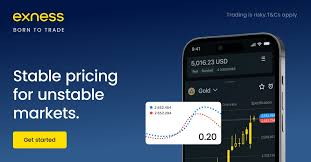
When engaging in trading with brokers like Exness, one of the fundamental concepts traders must grasp is the margin requirements. Understanding margin requirements Exness is essential for developing a robust trading strategy. Margin requirements are essentially the amount of funds required to open and maintain a leveraged position in the market. Trading with margin allows you to control larger positions than your actual capital would otherwise permit. It can amplify both gains and losses, so it’s crucial to understand how these requirements work. For more information on trading with Exness, you can visit margin requirements exness exbroker-argentina.com.
**What Are Margin Requirements?**
Margin requirements refer to the deposit required by a broker to open a trading position. This deposit acts as a guarantee to cover any losses incurred during trading. Essentially, when you trade on margin, you’re borrowing funds from the broker to increase your market exposure. Different brokers have varying margin requirements depending on the asset being traded and the trader’s account type.
**Types of Margin**
There are different types of margin in trading that one should be aware of:
- Initial Margin: This is the amount required to open a position. For example, if you’re trading a currency pair with a 1:100 leverage, you would need to deposit only 1% of the total trade value.
- Maintenance Margin: Once a position is opened, you must maintain a certain level of equity in the account. If your account equity falls below this level because of losing trades, you may receive a margin call, prompting you to deposit additional funds or close some positions.
**Understanding Exness Margin Requirements**
Exness offers competitive margin requirements, making it attractive for both new and seasoned traders. The margin requirements can vary depending on the asset class and leverage settings chosen. Exness provides various leverage options up to 1:2000, allowing traders to manage their risk according to their trading strategies.

**Leverage and Margin Calculation**
Understanding leverage in relation to margin is crucial. The leverage offered by Exness means you can trade positions larger than your actual capital. For example, if you want to open a trade worth $10,000 with a leverage of 1:100, you would only need to have $100 in your margin account. However, it’s important to note that while leverage increases potential profits, it also increases potential losses. Hence, careful risk management is critical.
**Margin Call and Stop Out Levels**
It’s essential to be aware of margin calls and stop-out levels while trading on margin. A margin call occurs when the equity in your account falls below the required maintenance margin. Exness usually sends a notification to alert you that additional funds must be deposited to maintain your positions. Failure to act on this can lead to a stop-out, where the broker closes your position to recover the loaned amount.
**How to Manage Margin Effectively**
Effective margin management is key to successful trading. Here are a few tips on how to manage your margin efficiently:
- Trade within your means: Only use leverage when necessary and ensure you can comfortably absorb potential losses.
- Keep track of your equity: Regularly monitor your account equity and adjust your position sizes accordingly to avoid margin calls.
- Diversify your portfolio: Avoid putting all your capital in a single trade. Diversification can help manage risk and improve your overall trading performance.
**Conclusion**
Margin requirements play a pivotal role in trading strategies for platforms like Exness. Understanding the dynamics of margin and leverage can help traders make informed decisions and manage risk effectively. With appropriate risk management and a clear understanding of margin requirements, traders can enhance their trading success and minimize potential losses. Always ensure you educate yourself further on margin requirements before diving into trading, as it can help set a solid foundation for your trading journey.
コメントを残す